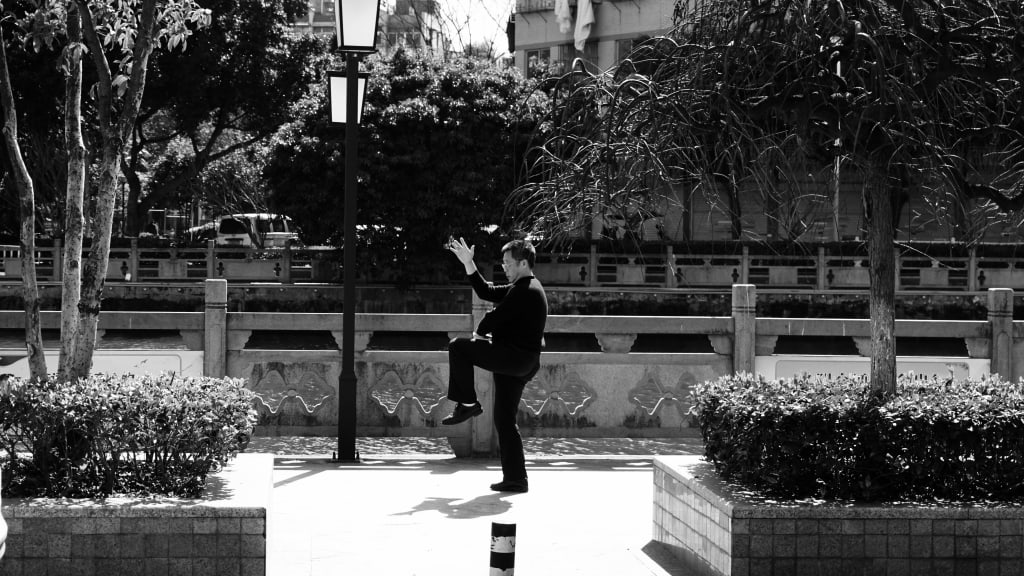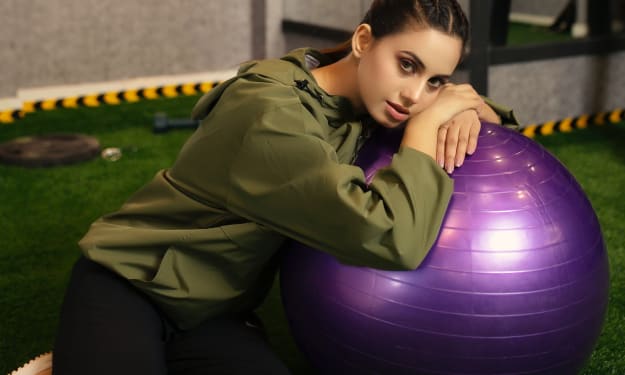The Art of Qigong and Tai Chi
A Journey to Holistic Wellness

In today's fast-paced world, the search for holistic wellness has become increasingly important. Qigong and Tai Chi, ancient Chinese practices rooted in the philosophy of Yin and Yang, offer a pathway to balance the mind, body, and spirit. This article explores the history, theory, usage, and difference between these two practices.
The Origins and History
Qigong and Tai Chi have deep roots in Chinese culture, tracing their origins back thousands of years. Qigong, which translates to "cultivating energy," focuses on harnessing and balancing the body's vital life force, known as Qi. Tai Chi, on the other hand, is a martial art form derived from Qigong, characterized by slow, flowing movements and deep breathing. Both practices incorporate principles of Traditional Chinese Medicine and Taoist philosophy.
Theory and Principles
The underlying theory of Qigong and Tai Chi revolves around the concept of Qi, the vital energy that flows through the body's energy channels, or meridians. According to traditional Chinese beliefs, when Qi is balanced and flowing harmoniously, the body is healthy, and the mind is calm. These practices aim to cultivate and balance Qi through mindful movement, deep breathing, and meditation, promoting overall well-being.
Benefits and Usage
Qigong and Tai Chi offer a multitude of benefits for practitioners of all ages and fitness levels. Some of the benefits include improved balance and flexibility, reduced stress and anxiety, enhanced focus and mental clarity, increased energy levels, and improved immune function. These practices can also support the management of chronic conditions such as arthritis, hypertension, and respiratory disorders. Furthermore, Qigong and Tai Chi can be practiced as self-defense martial arts, fostering self-discipline and confidence.
The Spelling
Both "Qigong" and "Chi Kung" are acceptable ways to spell and write the term. The difference lies in the Romanization system used to transliterate Chinese characters into English.
"Chi Kung" is based on the Wade-Giles romanization system, which was widely used before the adoption of the Pinyin system in the 20th century. The Wade-Giles system represents the pronunciation of Chinese characters in a way that may appear less intuitive to English speakers.
"Qigong" is the spelling based on the Pinyin system, which is the current standard for Romanizing Chinese. Pinyin uses a more direct and phonetically accurate representation of the Chinese pronunciation. It has become the most commonly used system for transliterating Chinese words and names into English.
In recent years, the Pinyin spelling "Qigong" has gained wider acceptance and is more commonly used in both academic and popular contexts. However, some older texts or practitioners may still use the "Chi Kung" spelling due to historical reasons or personal preference.
Overall, both "Chi Kung" and "Qigong" refer to the same practice of cultivating and balancing Qi, and either spelling can be considered correct.
Choosing the Practice
The practices of Qigong and Tai Chi have gained significant popularity in recent years, with numerous practitioners around the world benefiting from their transformative effects. In today's fast-paced and often stressful modern lifestyle, both disciplines offer a sanctuary of calmness and an opportunity to improve health and well-being.
Qigong, with its emphasis on energy cultivation and balance, can be an excellent choice for individuals looking to reduce stress, increase vitality, and improve overall health. The gentle movements, combined with deep breathing and meditation, promote relaxation, mental clarity, and improved energy flow. Qigong exercises can be easily adapted to individual needs, making them accessible to people of all ages and fitness levels.
Tai Chi, with its graceful and flowing movements, is an ideal choice for those seeking a mind-body practice that encompasses martial arts aspects. The slow and deliberate sequences promote balance, flexibility, coordination, and strength. Additionally, Tai Chi cultivates mindfulness and body awareness, leading to reduced stress and improved mental focus. The martial arts applications of Tai Chi can provide a practical aspect for self-defense, if desired.
Choosing between Qigong and Tai Chi ultimately depends on personal preferences and goals. If you are primarily interested in cultivating energy, reducing stress, and promoting relaxation, Qigong may be the ideal choice for you. On the other hand, if you are drawn to the martial arts aspects, while still enjoying the benefits of improved physical and mental well-being, Tai Chi might be a better fit. Some individuals choose to practice both disciplines, finding that they complement each other and offer a more comprehensive approach to wellness.
Regardless of which practice you choose, it is important to remember that consistency and dedication are key. Regular practice, even if it's just a few minutes a day, can yield significant benefits over time. Although you can find an abundance of materials online, it is recommended to seek guidance from a qualified instructor or join a class to learn the proper techniques and ensure safe and effective practice.
Popular Sequences
Both Qigong and Tai Chi encompass a wide range of movements, each with its unique purpose and benefits. Here are a few fundamental sequences:
Eight Pieces of Brocade (Ba Duan Jin): This classic Qigong set consists of eight exercises that target specific organs and energy pathways. Each exercise focuses on stretching, strengthening, and balancing different areas of the body, promoting overall vitality and well-being.
Five Animal Frolics (Wu Qin Xi): This Qigong set imitates the movements and behaviors of five animals (tiger, deer, bear, monkey, and bird). It combines physical postures, breath control, and mental focus to enhance strength, flexibility, balance, and internal energy circulation.
Yi Jin Jing (Muscle/Tendon Changing Classic): This ancient Qigong set focuses on stretching and strengthening the muscles, tendons, and ligaments of the body. It includes a series of movements combined with specific breathing techniques to improve flexibility, promote vitality, and cultivate internal strength.
Six Healing Sounds (Liu Zi Jue): This Qigong practice combines vocalization with gentle movements to regulate and balance the body's internal organs and emotions. Each sound corresponds to a specific organ, and the practice aims to release stagnant energy and promote healing and harmony.
Wild Goose (Dayan) Qigong: This set of Qigong exercises is inspired by the graceful movements of wild geese. It combines stretching, twisting, and flowing movements with deep breathing and visualization techniques. The practice enhances energy flow, improves balance, and cultivates a sense of tranquility and connection with nature.
In Tai Chi, well-known are:
Yang Style 24-Form: This short form is one of the most popular Tai Chi sequences practiced worldwide. It combines essential movements from the traditional Yang Style long forms and is characterized by gentle, flowing motions that promote relaxation, balance, and coordination.
Chen Style 36-Form: Developed by the Chen family, this sequence integrates slow and fast movements, as well as explosive techniques. It emphasizes strong stances, silk-reeling energy, and martial applications while enhancing flexibility, strength, and internal energy cultivation.
Sun Style 73-Form: Created by Sun Lu Tang, this sequence combines elements of Tai Chi, Xing Yi, and Bagua. It features agile footwork, smooth transitions, and natural movements. The Sun Style emphasizes health benefits, relaxation, and harmonizing the mind and body.
Wu Style 108-Form: Originating from the Wu family, this sequence incorporates softness and gracefulness with precise and deliberate movements. It emphasizes balance, flexibility, and internal energy circulation while maintaining a gentle and flowing pace.
Chen Style Old Frame (Lao Jia) Routine 74: This traditional sequence is known for its powerful and explosive movements combined with slow and soft techniques. It embodies the martial aspects of Tai Chi and promotes strength, agility, and coordination.
These sequences are just a glimpse of the rich variety of movements available within the realms of Qigong and Tai Chi. Both practices offer tremendous potential for improving health and well-being in the modern world. Whether you seek a gentle and meditative practice or a harmonious blend of martial arts and mindfulness, incorporating Qigong or Tai Chi into your daily routine can bring about a profound positive impact on your physical, mental, and spiritual well-being.
About the Creator
Enjoyed the story? Support the Creator.
Subscribe for free to receive all their stories in your feed. You could also pledge your support or give them a one-off tip, letting them know you appreciate their work.






Comments
There are no comments for this story
Be the first to respond and start the conversation.